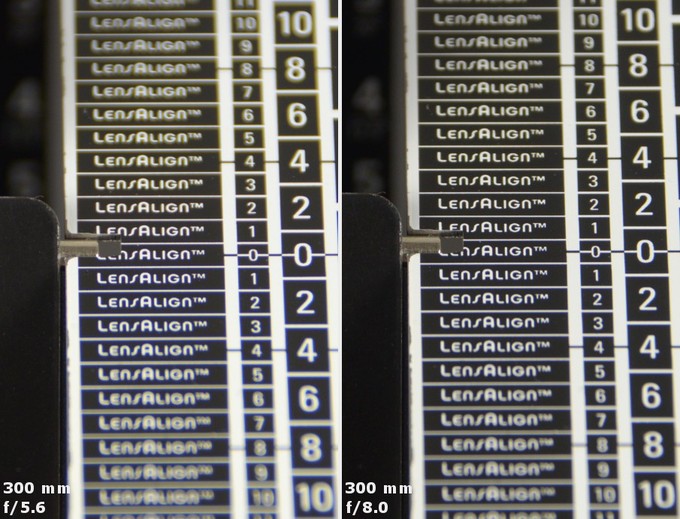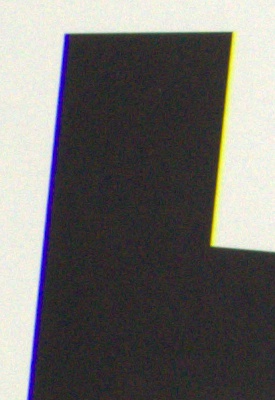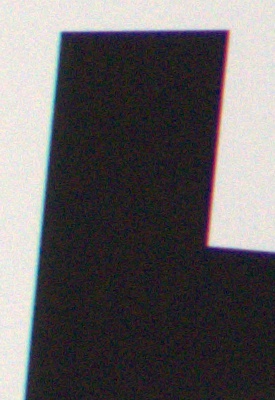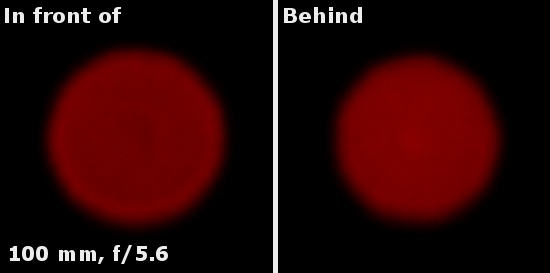Nikon Nikkor AF-S DX 18-300 mm f/3.5-5.6G ED VR
5. Chromatic and spherical aberration
We didn’t expect to meet any serious problems with the longitudinal chromatic aberration in a slow megazoom. We were wrong. The photos below show clearly that the problem not only exists but is visible also after stopping down the lens by 1 EV. Why Nikon included as many as three low-dispersion elements when they didn’t put them to any good use?
 |
Please Support UsIf you enjoy our reviews and articles, and you want us to continue our work please, support our website by donating through PayPal. The funds are going to be used for paying our editorial team, renting servers, and equipping our testing studio; only that way we will be able to continue providing you interesting content for free. |
- - - - - - - - - - - - - - - - - - - - - - - - - - - - - - - - - - - - - - - - - - - - - - - -
Still the longitudinal chromatic aberration is just a minor slip-up when compared to the correction of its lateral version. Let’s look at the graph below.

Firstly at every focal length you can find aperture values for which the aberration reaches a high level. The performance in the 50-100 mm range is a real catastrophe as you have to take into account the chromatic aberration of even 0.22%. At the shortest focal length the situation is hardly better, with the aberration level oscillating between 0.16% and 0.18%.
It’s true that theTamron 16–300ámm f/3.5–6.3 DiáIIáVCáPZD MACRO didn’t exactly shine in this category either, having huge chromatic aberration at the maximum focal length. Still at 50-100 mm it could correct the aberration pretty well no matter what aperture you employed and at the wide angle, after all noticeably wider than that of the Nikkor, it fared much better too.
It would be difficult to call the Nikkor’s AF-S DX 18–300ámm f/3.5–5.6G EDáVR correction of both variants of the chromatic aberration as something less than a very serious slip-up…
| D7000, RAW, 50 mm, f/8.0 | D7000, RAW, 300 mm, f/5.6 |
 |
 |
Spherical aberration
Although the tested lens didn’t have any „focus shift” effect we know it doesn’t correct the spherical aberration in a perfect way – you can notice it in defocused light circles. It would be difficult to pass over the fact that the circle positioned in front of the focus has a very light rim on the edge, a feature not visible in the case of the circle behind the focus. It is a classic symptom of spherical aberration.







